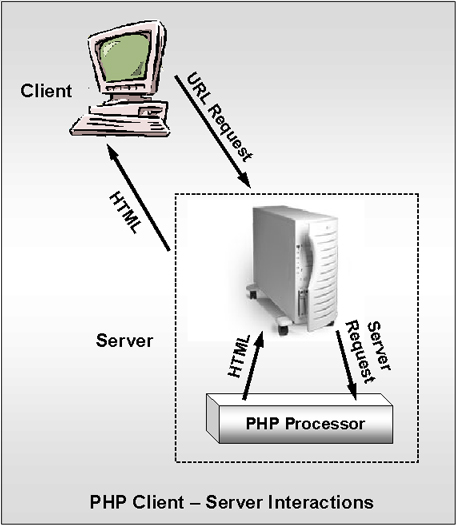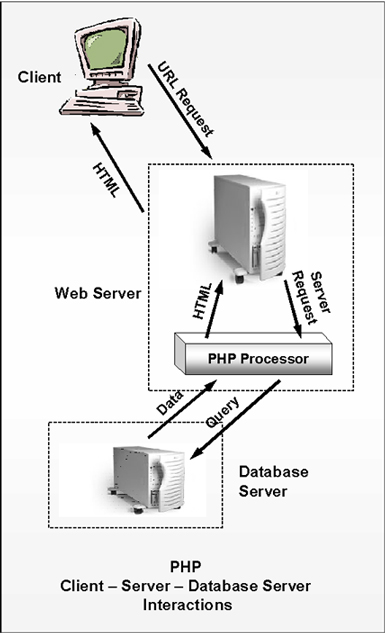
What is PHP?
| Introduction.
PHP Originally, PHP was an acronym for Personal
Home Page. It was created in 1994 by Rasmus Lerdorf
to track the visitors to his online resume. After other developments
it has now largely become PHP: Hypertext
Preprocessor.
PHP is
The following diagram gives a representation of the interactions between the client and the web server. |

Thus
Interacting with a database, such as MySQL isn't much different. A three tiered configuration is represented by the following diagram. |

| Notice all of the database interactions are done
through some sort of query written into the PHP code and submitted during
the PHP processing. Some Syntax. With these things in mind it is important to develop the overall syntax that is usually used to let the server distinguish between HTML and PHP script. One of the main things done to signal the web server that a file contains PHP code is to give it a .php extension. Since HTML files are tag delimited "nodes", PHP interfaces with this approach by using
and/or
to delimit the PHP scripting. There are often several such blocks of code within a file. It can also be interesting to see the rather strange places this embedding can occur! But more about this throughout the course. |